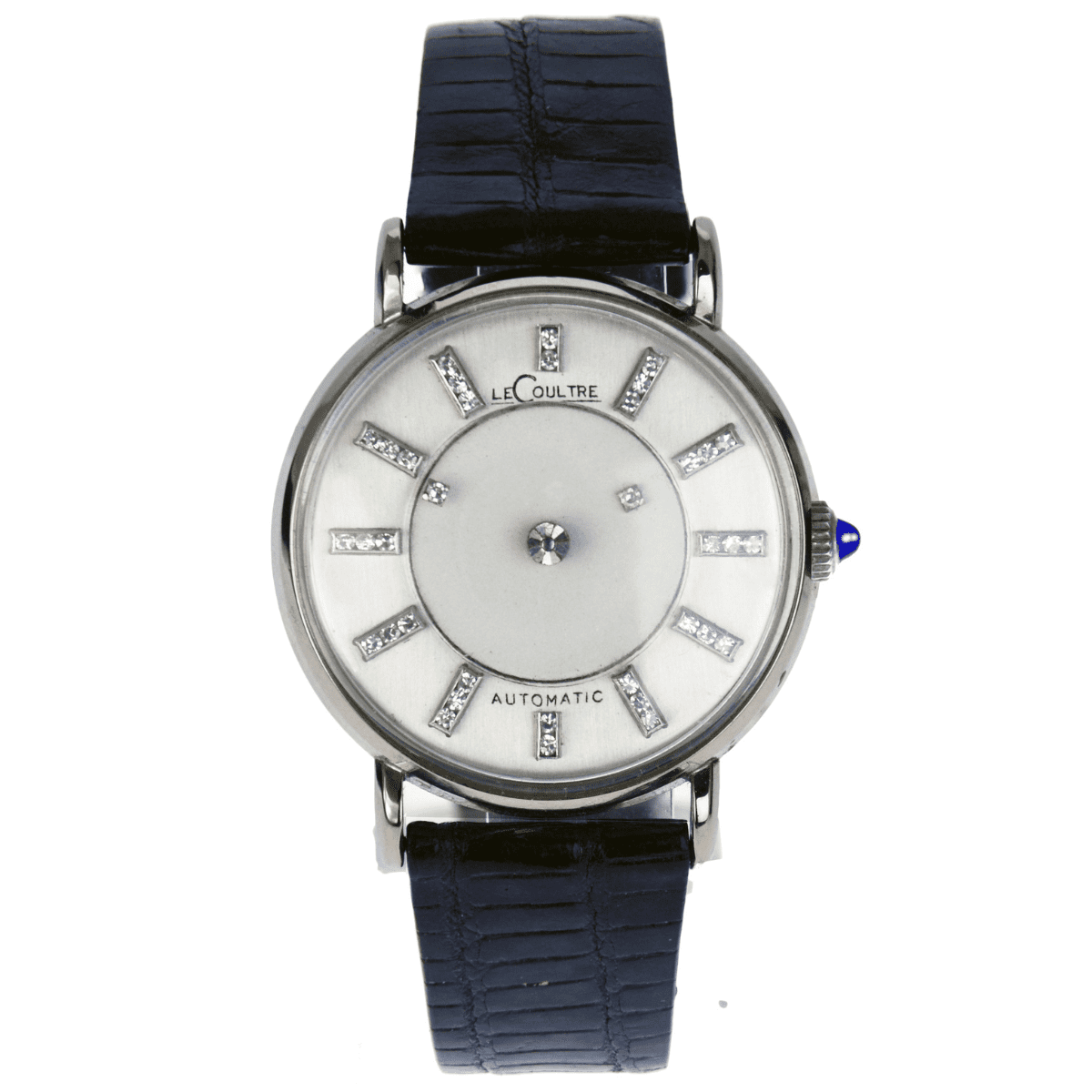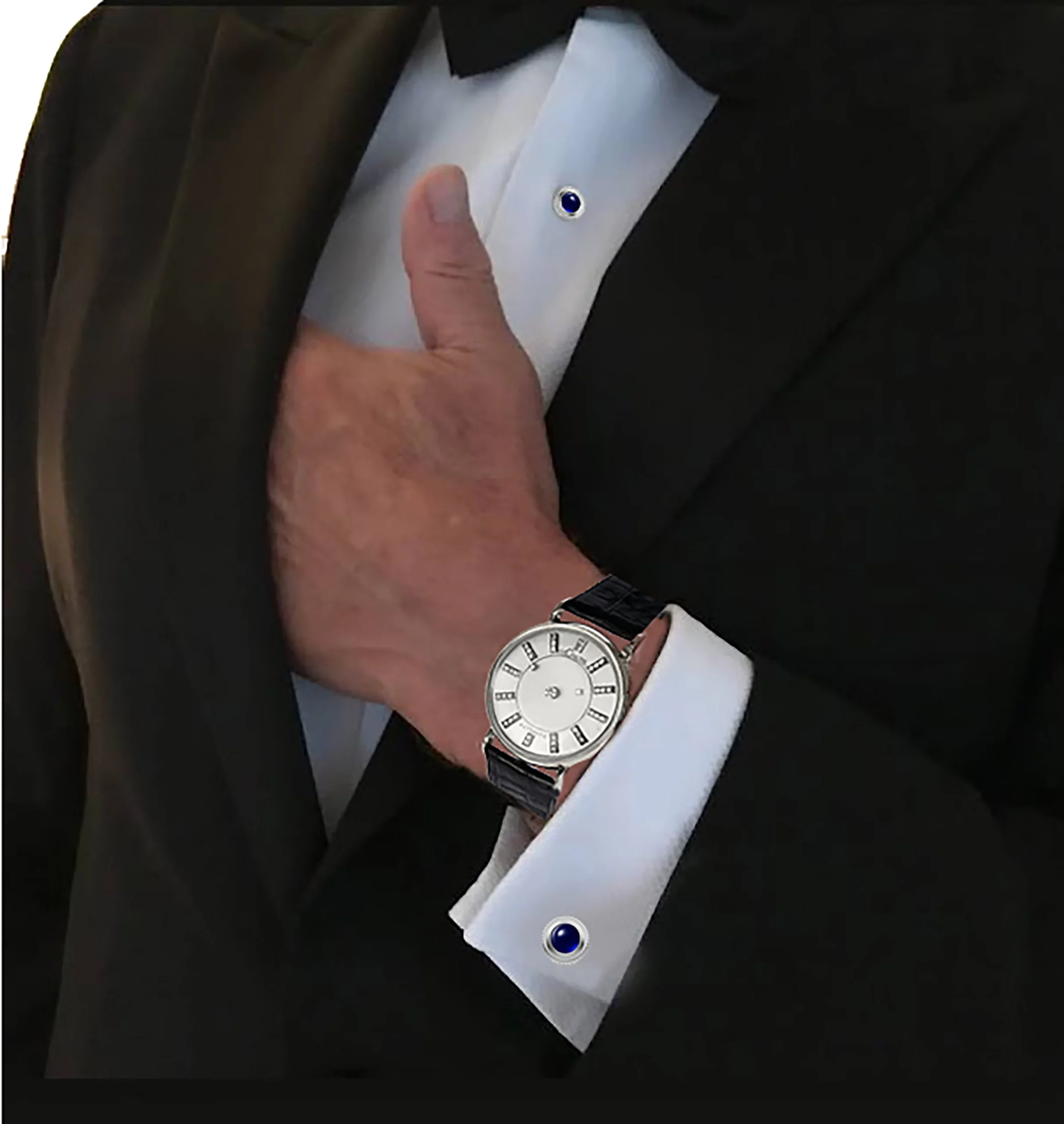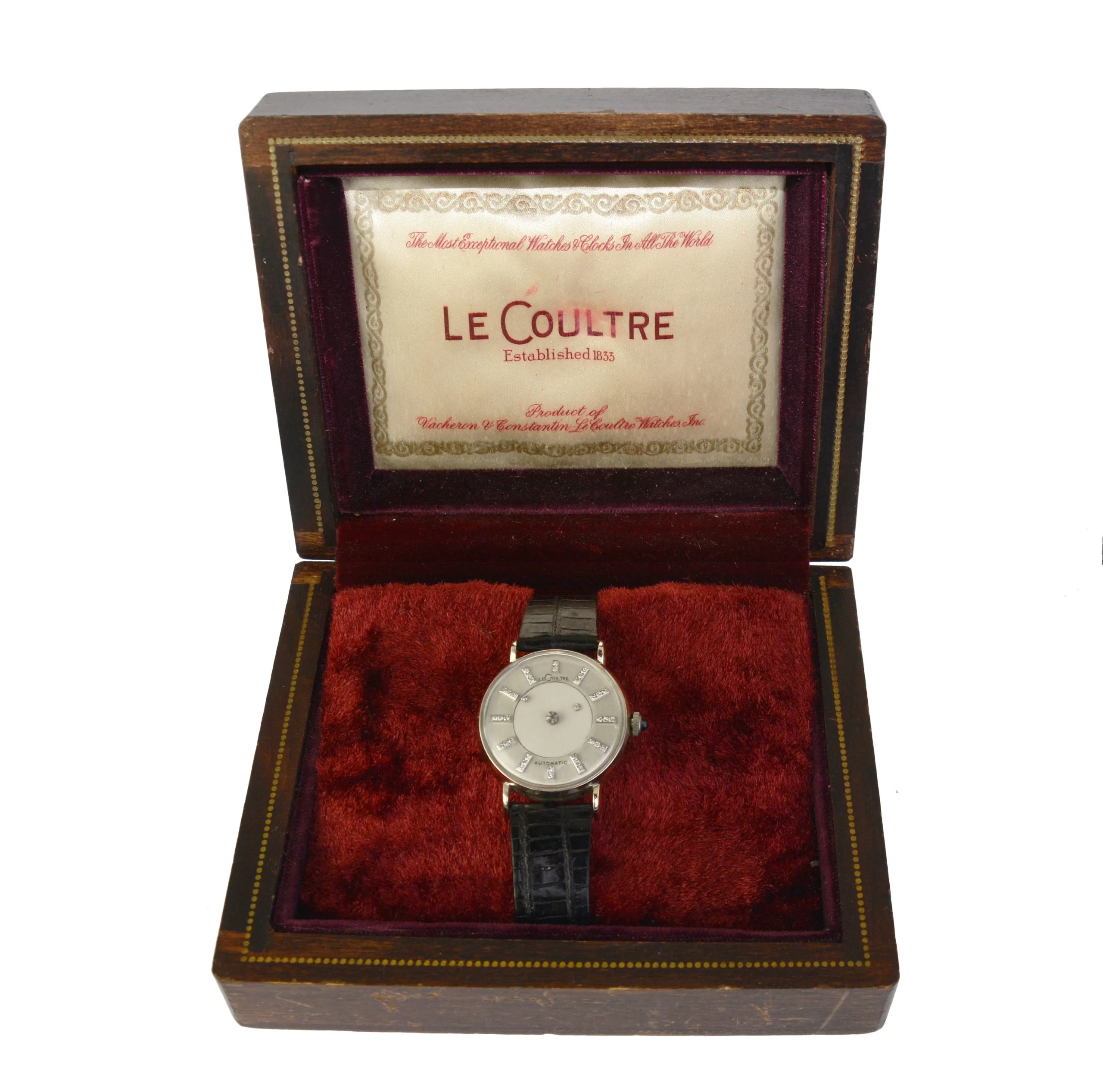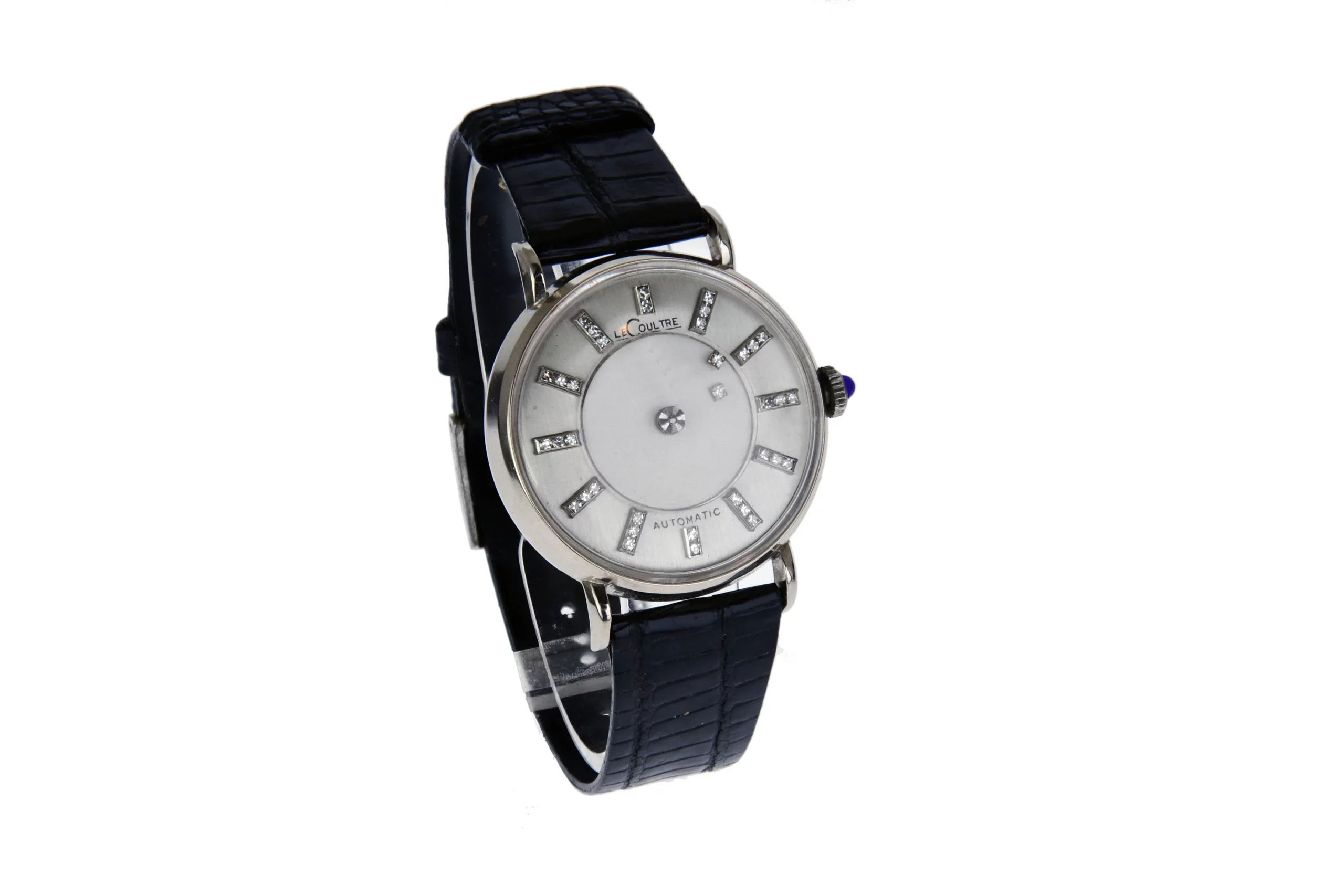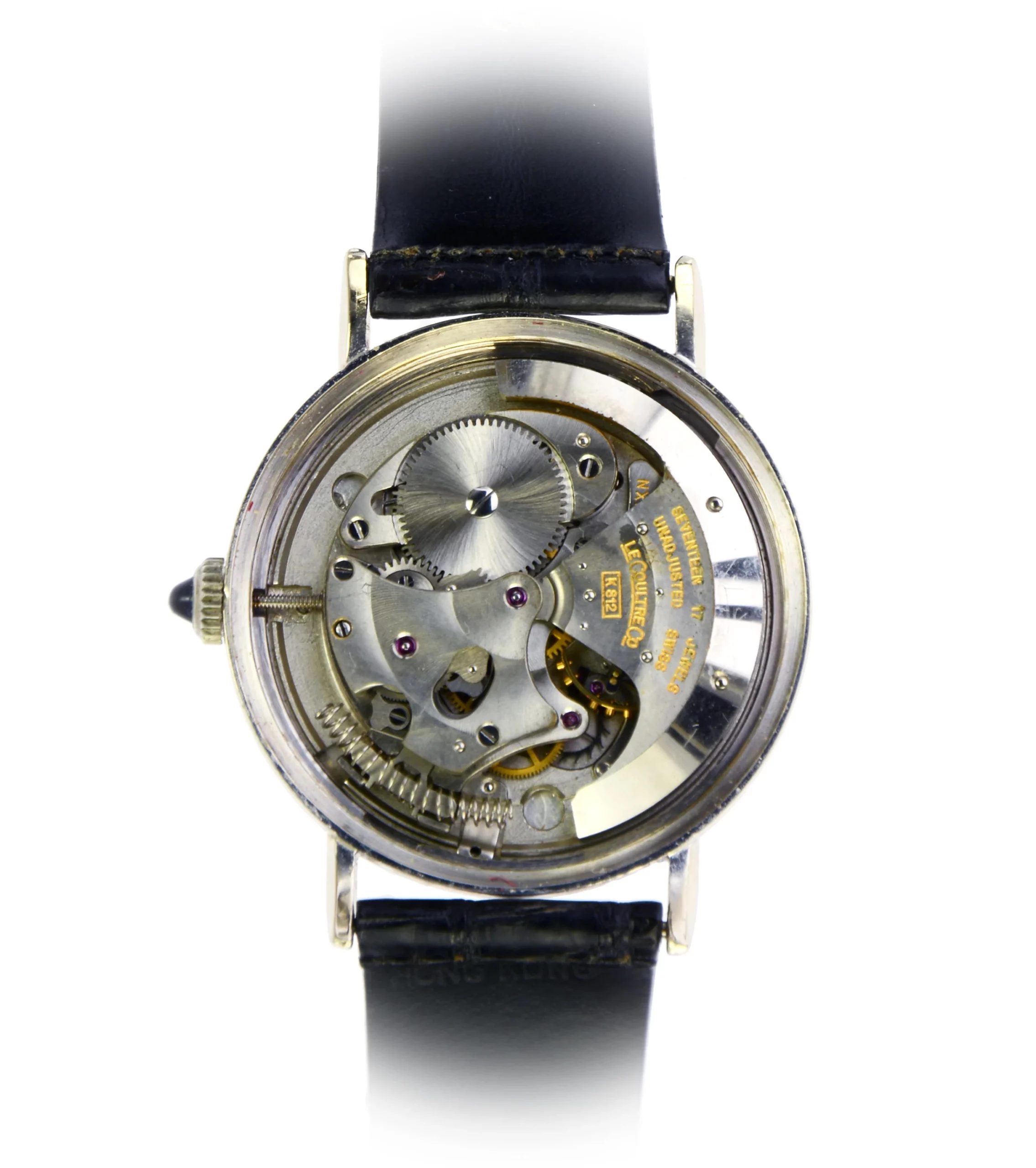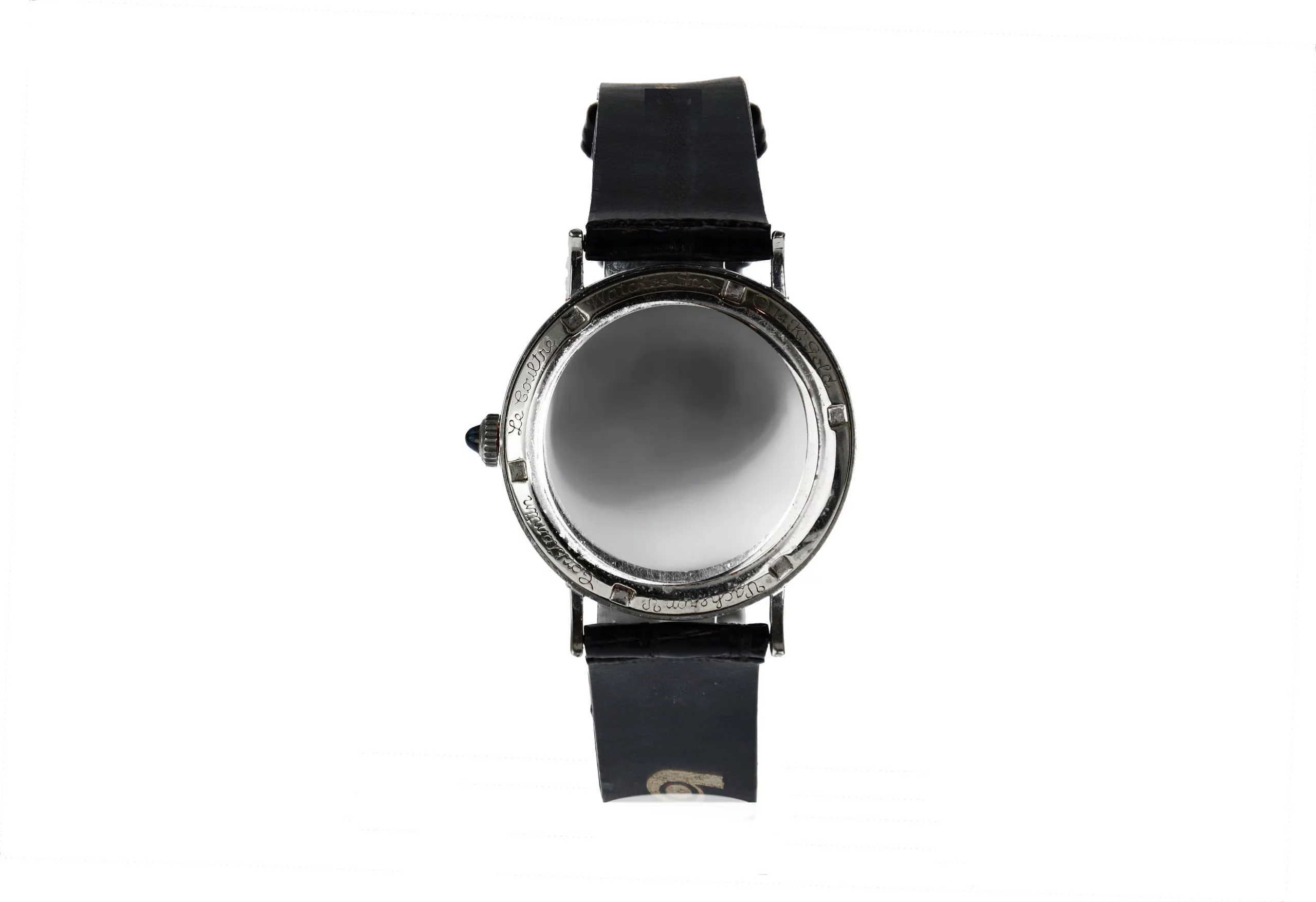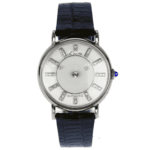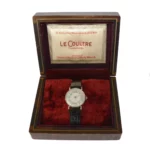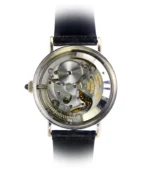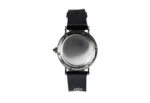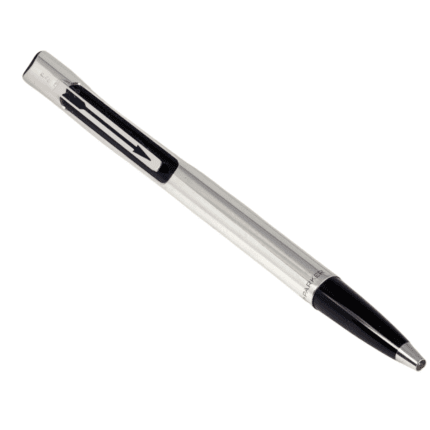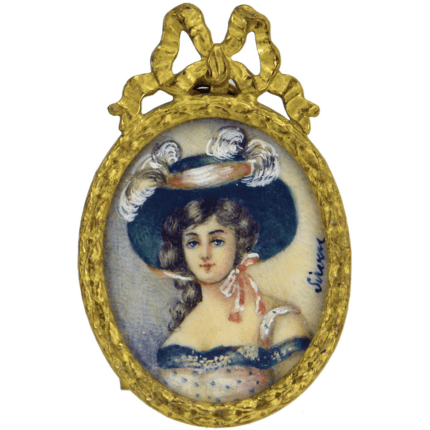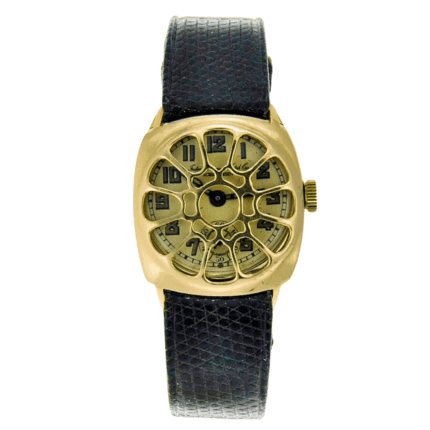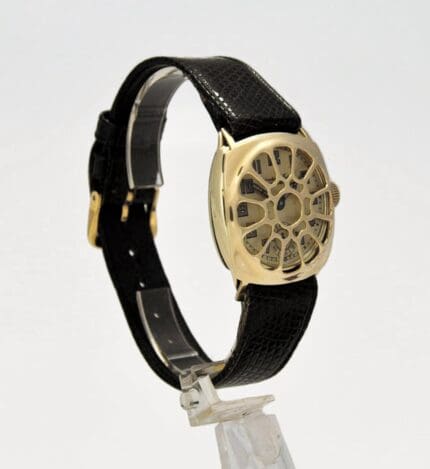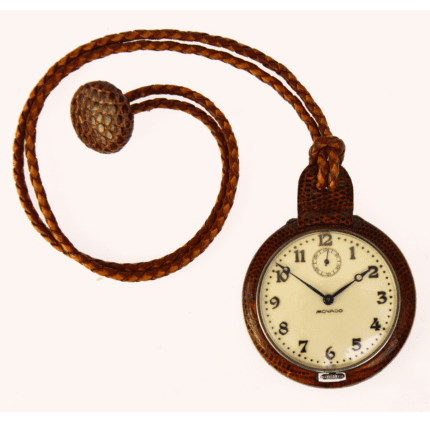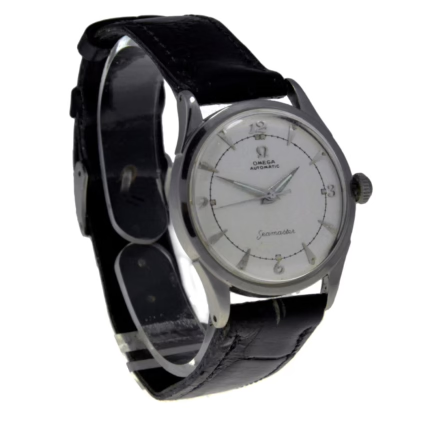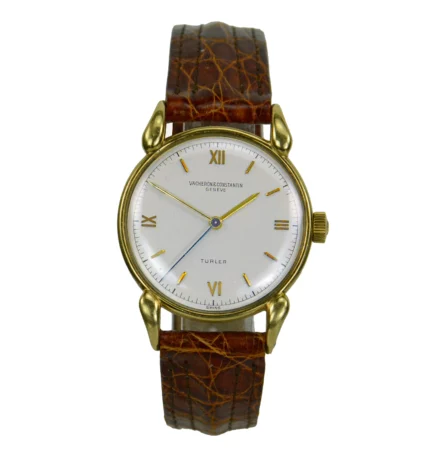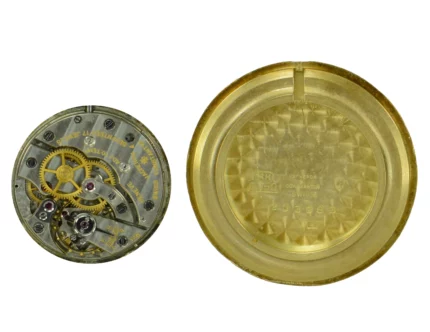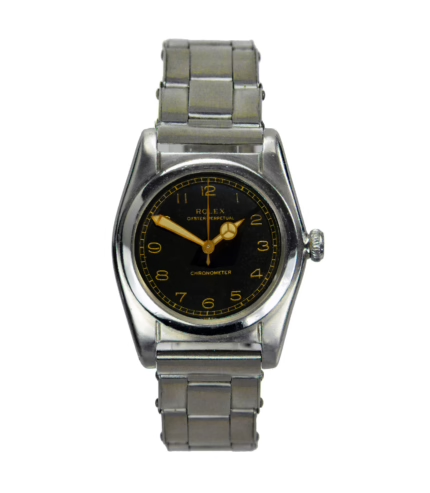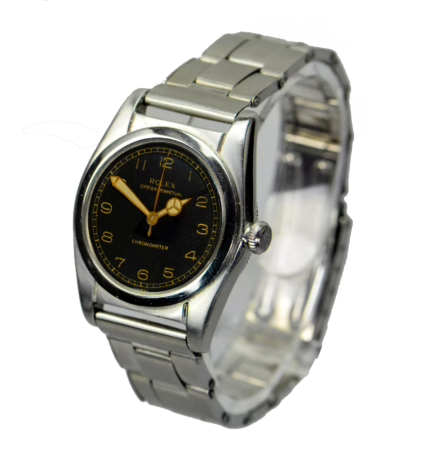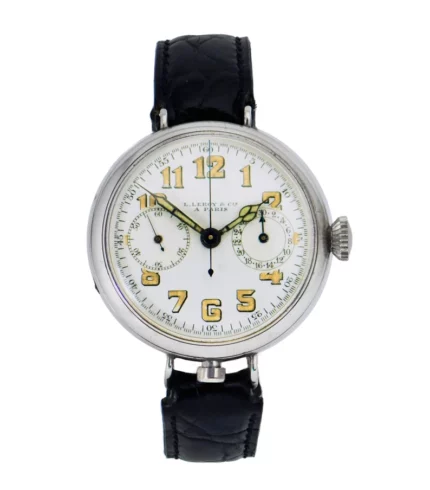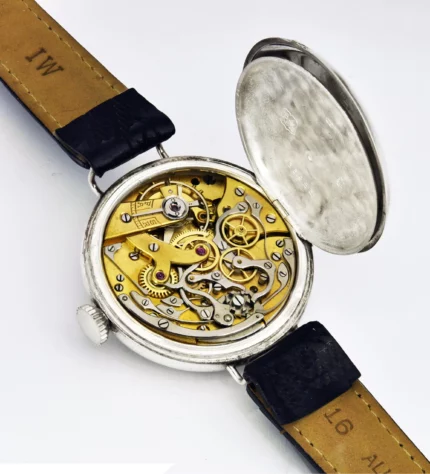Exceedingly Rare and Beautiful ** Automatic Vacheron & Constantin LeCoultre 14K Solid White Gold Diamond Encrusted “Mystery Dial” Wristwatch, Swiss ca 1957 **
This is the ideal piece for Black Tie and Red-Carpet Events… or else for any time you want, just because you can.
Adorned with 36 individual diamonds of which two “mysteriously” glide around the watch’s dial to mark the minutes and the hours in place of watch hands.
Every V&C LeCoultre mystery dial watch is rare; and 99.9% of those produced were the hand-wind version. Automatic self-winding examples like the present watch are exceedingly rare.
Also remarkable is this watch’s Vacheron & Constantin plus LeCoultre provenance shown by the combined signature on the case, dial and movement.
Indeed, Jaeger-LeCoultre was integrated with Vacheron & Constantin from 1938 through 1965. The Diamond Dial Mystery Watch was the only collaboration in which both the names Vacheron & Constantin and LeCoultre appeared together on a product. Of note is the text emblazoned on the cover of the original wooden case that accompanies this watch: “Product of Vacheron & Constantin LeCoultre Watches Inc.”
Crown jewel both in vintage V&C as well as Jaeger-LeCoultre watch collections, from museums to private aficionados, the Mystery Dial persists as a particularly fascinating and appealing design innovation.
- Dimensions: 32 mm (excluding the winding crown) x 39 mm (lug to lug)
- Case signed: Vacheron & Constatin LeCoultre Watches Inc.
- Dial signed: LeCoultre, AUTOMATIC
- Movement: LeCoultre Cal. K812 , 17 JEWELS, Bumper automatic.
- Hallmarks: Case fully hallmarked, 14ct
- Condition: Excellent. Serviced by Master Swiss Watchmaker
Shipping Worldwide via Courrier Service. Duty-Free Shipping within Europe.
Payment: If you prefer to pay by bank transfer or lay-away, please send us a message. Likewise, if check-out proves unable to process your credit card.
Vacheron & Constantin history
When Jean-Marc Vacheron founded the company in Geneva in 1775, he already had been an independent watchmaker in that city since 1755. In 1785, he passed the reins on to his son Abraham.
But four years later the French Revolution put the firm into dire straits, because significant numbers of V&C’s clientele were precisely those who lost their heads to the guillotine, or otherwise suffered economic ruin.
The solution only came in 1819, in the person of Francois Constantin, a wealthy grain merchant who was taken on as business partner. Constantin had previously been a watch dealer, and was entirely committed to the firm. Constantin traveled far and wide to market V&C’s watches, opening new markets across the world. Interestingly, at that time the main market became North America.
Another fortuitous decision was made in 1839 with their engagement of Georges-Auguste Leschot to supervise production. Leschot was a talented watchmaker and inventor, even a mechanical genius by some accounts. His machines and tools helped V&C to produce precision watches at a significantly reduced cost. He also invented the caliber concept which exists to this day… in other words standardized movement designs.
Following Constantin’s death in 1854 and Vacheron’s in 1863, the company fell under the control of a various heirs, including, at one point, two women who led the firm.
With the advent of the 20th century, fashion began moving towards the wristwatch. V&C, quick to react, began producing top end wristwatches in 1910.
Jaeger-LeCoultre history
In 1833, Antoine LeCoultre (1803-1881) founded a small watchmaking workshop in Le Sentier, Switzerland where he crafted high-quality timepieces.
During the two decade that ensued, LeCoultre’s inventions included some of watchmaking art’s most important breakthroughs. As a result, in 1851 he was awarded a gold medal for his work on timepiece precision and mechanization at the first Universal Exhibition in London.
In 1866, at a time when the various operations involved in watchmaking still were decentralized amongst hundreds of small home/farm workshops, Antoine and his son, Elie LeCoultre (1842-1917), established the Swiss Vallée de Joux’s first full-fledged centralized manufacture (factory): LeCoultre & Cie. This new concept brought together the employees’ combined expertise, all under one roof. In this manner, beginning 1870, they developed the first partially mechanised production processes for complicated watch movements.
By the end of that year the Manufacture employed 500 people and was known as the “Grande Maison de la Vallée de Joux”. By 1900 it had created over 350 different calibres, of which 128 were equipped with chronograph functions and 99 with repeater mechanisms. From 1902, and for the next 30 years, LeCoultre & Cie. produced most of the movement blanks for Patek Philippe of Geneva.
In 1903, the Paris-based Official Chronometer Maker to the French Navy, Edmond Jaeger, challenged Swiss manufacturers to develop and produce the ultra-thin movements he had invented. Jacques-David LeCoultre, Antoine’s grandson who was responsible for production at LeCoultre & Cie., accepted the challenge. This gave rise to a collection of ultra-thin pocket watches, including the thinnest in the world in 1907: the LeCoultre Calibre 145.
That same year French jeweller Cartier signed a contract with Jaeger under which all movements for a period of fifteen years would be exclusive to Cartier. These movements were produced by LeCoultre.
In 1937, the collaboration between Jaeger and LeCoultre led to the renaming of the company to Jaeger-LeCoultre. However, from 1932 to 1976, due to the U.S. Smoot Hawley Tariff Act, the Company began to exclusively export watch movements instead of complete watches out of Switzerland for the US/Canadian markets. These where then fitted into locally manufactured cases in North America and sold under the name LeCoultre by Vacheron-LeCoultre, a subsidiary of Longines-Wittnauer. Only after 1985 was the name Jaeger-LeCoultre adopted uniformly worldwide.
From 1938 through 1965, Jaeger-LeCoultre merged with Vacheron & Constantin. Since 2000, Jaeger-LeCoultre is wholly owned by the Swiss-based luxury goods holding company Richemont SA, who also owns Dunhill, Baume & Mercier SA, Cartier, IWC International Watch Co. AG, Montblanc, Piaget SA, Manufacture Roger Dubuis SA, Vacheron&Constantin SA, and Van Cleef & Arpels.


